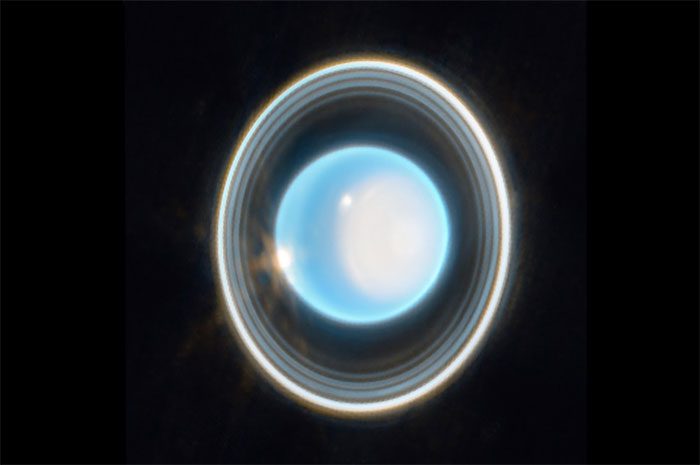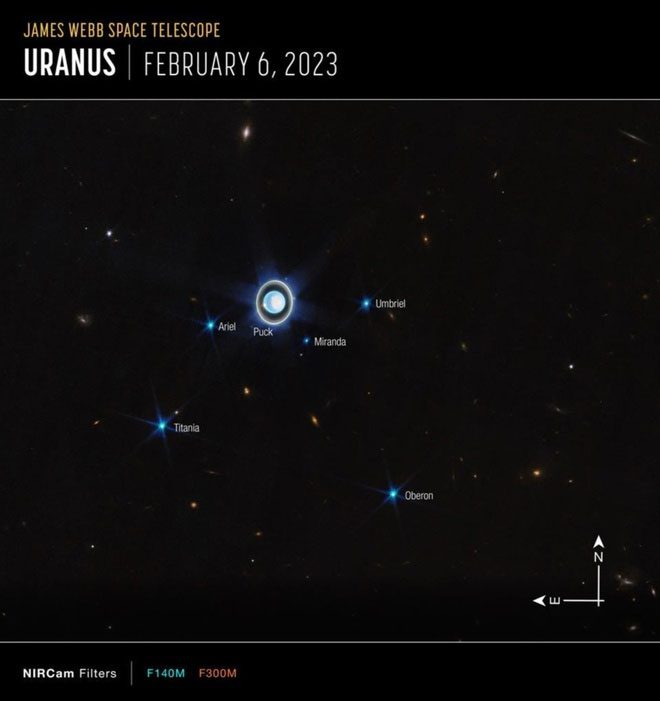After 19 Years, Humanity Can Finally Admire the Rings of Uranus Captured by Space Telescopes.
On April 6, the National Aeronautics and Space Administration (NASA) released new images of Uranus, taken in February by the Near Infrared Camera (NIRCam) on the James Webb Space Telescope.

Close-up image of Uranus captured by the James Webb Space Telescope. (Image: NASA).
In addition to its characteristic light blue color, the image also reveals faint rings and 6 brightest moons (satellite objects) around Uranus.
According to Forbes, the James Webb is the third telescope in history to capture the rings of Uranus. Previous images were taken by the Voyager 2 spacecraft (in 1986) and the Keck Observatory (in 2004).
The James Webb image captures 11 of the 13 known rings of Uranus. Some of the rings are very bright, making them appear to merge into one when viewed in the images.
NASA’s panoramic view shows the 6 brightest satellites among the total of 27 known moons of Uranus. Because only 2 filters on the NIRCam were used with a 12-minute exposure time, the remaining satellites appear quite small and faint.
The white spot to the right of Uranus is called the polar cap – the icy region surrounding the planet’s pole. According to NASA, it is noteworthy that the polar cap seems to appear only when illuminated by direct sunlight during summer and disappears in autumn.
From the data collected by James Webb, scientists hope to conduct a deeper analysis of the mysterious polar cap mechanism of Uranus.

Panoramic image of Uranus and its 6 brightest moons. (Image: NASA).
The sensitivity and longer wavelength of NIRCam reveal that the center of the polar cap is brighter, a detail not captured by the Hubble Space Telescope or the Keck Observatory.
Uranus belongs to the group of giant ice planets, with a rotational axis tilt of up to 98 degrees. This planet takes about 84 Earth years to complete one orbit around the Sun.
Due to its significant axial tilt, the length of a season on this planet is very long, leading to extreme weather conditions. According to NASA, the northern pole of Uranus is currently in late spring, while summer will arrive in 2028.
Like most other planets in the Solar System, Uranus holds many mysteries. The images from James Webb and Hubble have revealed some interesting information; however, scientists believe that sending a spacecraft into the atmosphere is necessary to fully understand the planet’s activities.





















































